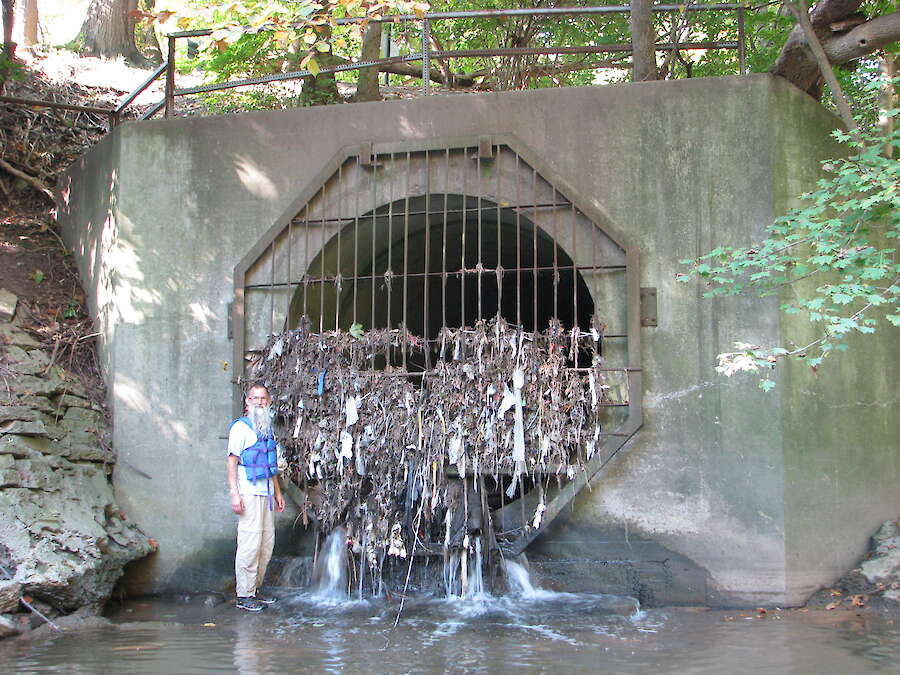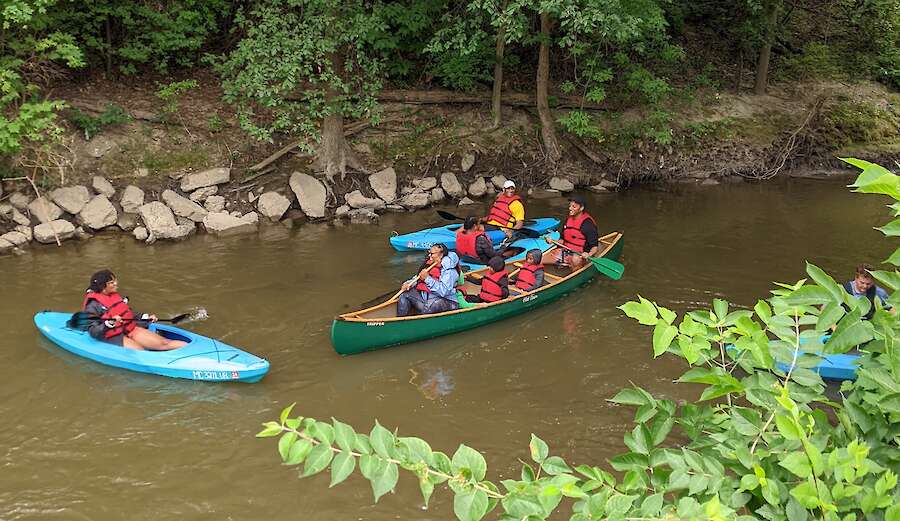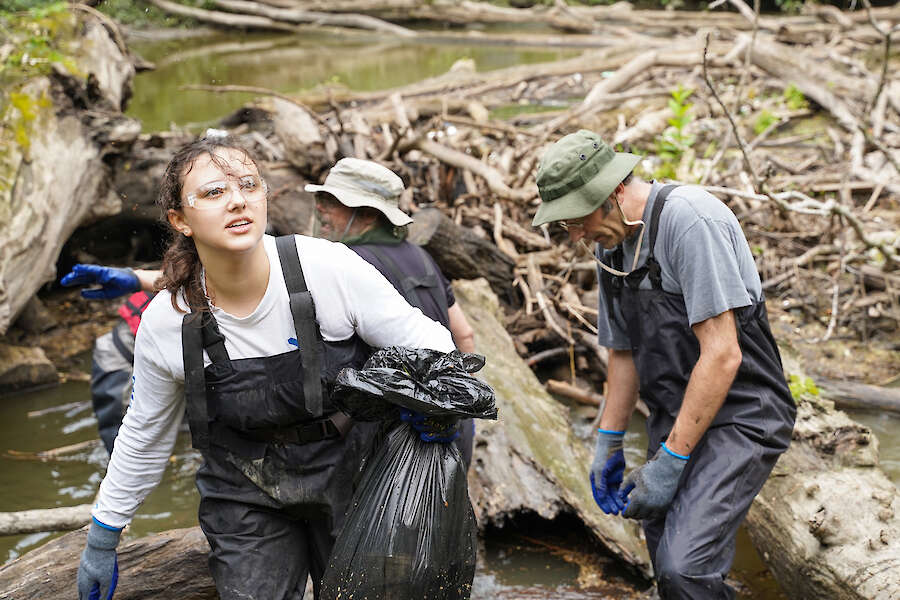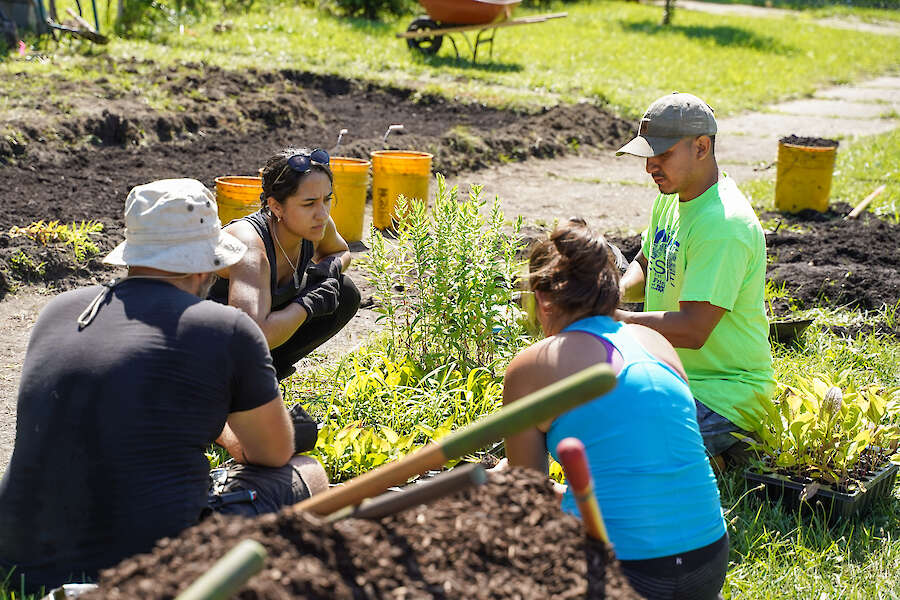Historically Overburdened Communities Contend with Failing Infrastructure

The impervious clay soils and flat lake plain landscape of the Rouge River create a naturally quick, flashy flow. Bustling metropolitan communities have covered the watershed with impervious surfaces, channelized and encased miles of river in or under concrete, and blocked river flow with 62 dams. This has created a river with flow fluctuations that exceed 50 times the average summer flow following a normal rain event. These large fluctuations, known as flashiness, cause banks to erode and release sediment into the water, clogging the gills of fish and the mayflies they eat. Uncontrolled combined sewers compound the issue by releasing diluted raw sewage into the river. Larger storms can also cause sanitary sewer overflows into the river. Unpredictable, heavy rain events have led to flooding that has caused millions in property loss, road blockages, and damage to local infrastructure. Preventing these overflows requires huge infrastructure solutions that are difficult and costly to fund. However, infrastructure investment is necessary to address sewage and flooding issues.
Uncontrolled Sprawl Consumes Dwindling Farmland and Forests
As the Detroit River’s largest tributary, the Rouge made an ideal waterway for Great Lakes Shipping. The downstream end of the watershed exploded with industry when Henry Ford placed the world’s largest integrated factory there, and development followed. Over time, people living in industrial areas moved out to the suburbs, and this movement continues today into the headwaters of the watershed where the last stands of forest, wetlands, and farmland remain. Developers target these areas due to continued demand for suburban sprawl fueled by incentives, regulations, legislation, funding priorities, and historic inequities. Today, more than 50% of the developed land consists of residential sprawl. Protecting undeveloped land will improve river health and increase human quality of life in the watershed.
Local Communities Are Dedicated to Restoring the Watershed
Friends of the Rouge and other local stakeholders have worked together over the past three and a half decades to address these challenges with infrastructure, urban sprawl, and impervious surface. Some practices have included installation of rain gardens and bioswales, planting trees, disconnecting downspouts, and distributing rain barrels to reduce the amount of polluted stormwater running into the river.
Growing Recreation Opportunities
 Environmentally-focused investments—including local, state and federal support—have greatly improved water quality. These transformations have created positive and tangible community outcomes including improvement of access to green spaces, plans for expanding non-motorized trails, and an interest in economic redevelopment.
Environmentally-focused investments—including local, state and federal support—have greatly improved water quality. These transformations have created positive and tangible community outcomes including improvement of access to green spaces, plans for expanding non-motorized trails, and an interest in economic redevelopment.
Residents of the Rouge River watershed enjoy over 300 parks covering 20,000 acres and 27 nature preserves. As Rouge River water quality improves, opportunities for water-based recreation have increased. Friends of the Rouge is leading the development of a 29-mile water trail along the Lower Rouge. Paddlers, anglers, and other passive recreationalists have started coming to the Rouge with the return of fish and improving water quality. There are growing regional efforts to create networks of interconnected greenways and blueways across the Rouge watershed and beyond.
For more than half a century, historically overburdened communities in the urban centers of the Rouge watershed have been walled off from their neighborhood rivers and adjacent greenspace as an outcome of historical redlining and disinvestment in urban centers. This reality continues to present challenges to water-based recreation including water quality concerns, logjams caused by flashy flows, lack of launches and amenities, negative perception of the river, contaminated fish, and lack of access—especially with underserved communities of color.
What Can You Do?

Collaborative efforts between elected officials, regulatory agencies, municipal leaders, nongovernmental organizations, and community members improve the Rouge River watershed. Cumulative individual actions help protect your river and watershed. At home, you can plant rain gardens, reduce use of fertilizers and pesticides, and make use of local parks and recreation areas. In your community, you can volunteer with your watershed organization like Friends of the Rouge, participate in river restoration and monitoring, and work with elected officials, regulators, and land conservancies to protect land and rivers. For more information on the restoration and collaboration already happening the Rouge River, visit therouge.org.

